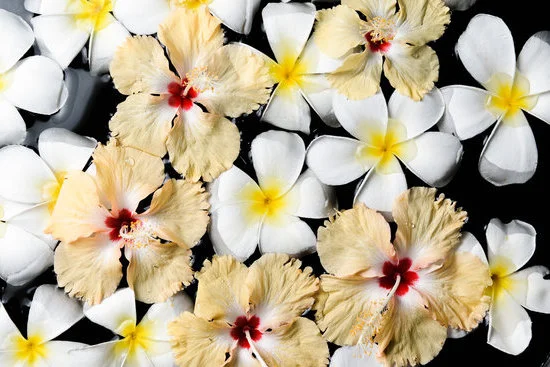When it comes to aromatherapy, essential oils often take center stage. These potent oils derived from plants have become popular for their therapeutic properties and ability to promote relaxation, improve mood, and alleviate various ailments. However, what many people may not realize is that essential oils should never be applied directly to the skin – this is where carrier oils come into play.
Carrier oils play a crucial role in aromatherapy by diluting and carrying essential oils onto the skin, making them safe for topical use. They act as a bridge between the highly concentrated essential oils and our skin, allowing us to enjoy the benefits of aromatherapy without any adverse reactions or irritations.
In this comprehensive guide, we will delve into the world of carrier oils for aromatherapy. We will explore their definition, function, different types available in the market, considerations before choosing one, and how to use them effectively in your aromatherapy practice. Additionally, we will address safety precautions and guidelines to ensure you have a positive and safe experience with carrier oils.
So whether you are new to using carrier oils in aromatherapy or an experienced practitioner looking to expand your knowledge, this article aims to provide you with all the information you need to harness the power of carrier oils and elevate your aromatherapy experience. Let’s explore the fascinating world of carrier oils together.
The Basics
A carrier oil plays a crucial role in aromatherapy, serving as the main component used to dilute and “carry” essential oils onto the skin. In essence, a carrier oil is any vegetable-based oil that is used to dilute or extend the properties of an essential oil before it is applied topically. This allows for safe use of essential oils on the body, as undiluted essential oils can be too potent and may cause skin irritation or other adverse effects.
The primary role of a carrier oil in aromatherapy is to ensure that essential oils are safely delivered to the skin, where their therapeutic benefits can be experienced. Essential oils are highly concentrated plant extracts that carry potent aromatic compounds, and their concentration needs to be reduced with a carrier oil to prevent any unwanted reactions.
When selecting a carrier oil for aromatherapy, it’s important to consider factors such as fragrance, texture, absorption rate, shelf life, and individual skin type or sensitivity. Some popular carrier oils include sweet almond oil, jojoba oil, coconut oil, grapeseed oil, and avocado oil. Each carrier oil has its own unique characteristics that make it suitable for different individuals and purposes in aromatherapy.
In addition to their fundamental role in dilution and delivery of essential oils, carrier oils also offer their own therapeutic benefits. Many carrier oils are rich in vitamins, fatty acids, antioxidants, and other compounds that nourish and moisturize the skin. Some even have specific properties like anti-inflammatory or antibacterial effects. Overall, using a carrier oil in combination with essential oils enhances the overall effectiveness of aromatherapy by ensuring safe application and providing additional skincare benefits.
Different Types of Carrier Oils
A comprehensive overview of different types of carrier oils used in aromatherapy is essential for understanding their individual qualities and benefits. Carrier oils play a crucial role in diluting and carrying essential oils, allowing them to be safely applied to the skin or used in various aromatherapy practices.
Popular Carrier Oils
There are numerous carrier oils available, each with its own unique properties and benefits. Some popular carrier oils include:
- Sweet Almond Oil: This is one of the most widely used carrier oils due to its versatility and mild aroma. It absorbs well into the skin, making it suitable for massage therapy.
- Jojoba Oil: Known for its resemblance to human sebum, jojoba oil is great for moisturizing the skin and hair. It has a long shelf life and works well as a base oil for essential oil blends.
- Coconut Oil: With its moisturizing properties, coconut oil is beneficial for dry and sensitive skin. It has a subtle aroma and solidifies at cooler temperatures.
- Grapeseed Oil: Lightweight with a non-greasy texture, grapeseed oil absorbs quickly into the skin. It is rich in antioxidants and can help tighten pores.
Specialty Carrier Oils
In addition to popular carrier oils, there are also specialty carrier oils that offer specific benefits:
- Rosehip Seed Oil: Known for its anti-aging properties, rosehip seed oil is high in vitamins A and C. It can help improve the appearance of scars, wrinkles, and stretch marks.
- Evening Primrose Oil: Often used in skincare products, evening primrose oil is beneficial for dry or mature skin types. It contains gamma-linolenic acid (GLA), an omega-6 fatty acid that helps maintain healthy-looking skin.
- Avocado Oil: Rich in nutrients such as vitamins A, D, E, and fatty acids, avocado oil is deeply moisturizing. It is especially beneficial for dry or mature skin and can help soothe inflammation.
- Argan Oil: Originating from Morocco, argan oil is known for its moisturizing and rejuvenating effects on the skin and hair. It is rich in vitamin E and essential fatty acids.
Choosing the Right Carrier Oil
When selecting a carrier oil, it’s important to consider factors such as individual skin type, desired benefits, and personal preferences. Some carrier oils may be more suitable for specific purposes, such as massage or skincare. It’s recommended to start with a small quantity of carrier oil and gradually increase the amount as needed.
Overall, understanding different types of carrier oils is crucial in enhancing your aromatherapy experience. Each carrier oil has its unique qualities and benefits that can be tailored to address specific needs or preferences. Experimentation with different carrier oils will help you find the perfect combination that suits your aromatherapy practices and enhances the therapeutic benefits of essential oils.
Considerations Before Choosing a Carrier Oil for Aromatherapy
Before selecting a carrier oil for aromatherapy, it is essential to consider several factors to ensure that you choose the most suitable oil for your needs. Below are some important considerations to keep in mind when choosing a carrier oil:
- Skin Type: Different carrier oils have varying levels of viscosity and absorption rates, making them more or less suitable for different skin types. For example, individuals with oily or acne-prone skin may benefit from lighter oils such as jojoba or grapeseed, while those with dry or mature skin may prefer heavier oils like avocado or sweet almond. Consider your skin type and any specific concerns you may have before making your choice.
- Allergies and Sensitivities: It is crucial to be aware of any allergies or sensitivities you may have before selecting a carrier oil. Some carrier oils, such as nut-based oils like almond or peanut, can trigger allergic reactions in individuals with nut allergies. Additionally, certain essential oils should not be used during pregnancy or by individuals with certain medical conditions. Consult with a healthcare professional if you have any concerns or doubts.
- Shelf Life and Stability: Some carrier oils have longer shelf lives than others due to their chemical composition and stability. Oils such as sweet almond and apricot kernel have relatively short shelf lives and can go rancid quickly if not stored properly.
On the other hand, oils like fractionated coconut oil and jojoba have longer shelf lives and are more stable over time. Consider the storage conditions available to you and how long you plan to use the carrier oil when making your choice.
In addition to these considerations, it is also important to research the specific properties and benefits of different carrier oils before making your selection. Understanding their individual qualities can help guide your decision-making process and ensure that you choose an oil that aligns with your desired outcomes in aromatherapy.
Popular Carrier Oils in Aromatherapy
Carrier oils play a vital role in aromatherapy by acting as a base for diluting essential oils before they are applied to the skin or used in diffusers. They not only help deliver the therapeutic properties of essential oils but also provide their own unique benefits to enhance the overall effectiveness of aromatherapy.
There is a wide range of carrier oils available, each with its own distinct qualities and uses. In this section, we will take a deep dive into some popular carrier oils used in aromatherapy and explore their benefits and uses.
- Sweet Almond Oil: This light, non-greasy oil is one of the most popular carrier oils in aromatherapy. It has a mild, nutty aroma and is rich in vitamins E and A. Sweet almond oil is known for its moisturizing properties and is often used in skincare products. Its emollient nature makes it an ideal choice for dry or sensitive skin types.
- Jojoba Oil: Jojoba oil closely resembles the natural sebum produced by our skin, making it easily absorbed without leaving an oily residue. It has anti-inflammatory properties and can help balance oil production, making it suitable for both oily and dry skin. Jojoba oil is often used as a carrier oil for facial serums or massage blends.
- Coconut Oil: With its pleasant tropical scent, coconut oil is not only popular for its versatile uses but also as a carrier oil in aromatherapy. It has natural antibacterial and antifungal properties which can be beneficial for certain skin conditions like acne or eczema. Coconut oil solidifies at cooler temperatures but melts easily upon contact with the skin.
- Grapeseed Oil: Extracted from grape seeds, this lightweight carrier oil has a mild aroma and absorbs quickly into the skin without clogging pores. Grapeseed oil is rich in linoleic acid, antioxidants, and vitamin E, making it a popular choice for moisturizing dry skin. It is also commonly used as a base oil for massage blends.
- Avocado Oil: Known for its rich and nourishing properties, avocado oil is a carrier oil that is excellent for hydrating and soothing the skin. High in essential fatty acids and vitamins A, D, and E, avocado oil can help reduce inflammation and promote skin cell regeneration. It is often used in facial oils or body creams.
Each carrier oil has its own unique benefits and uses, so it’s important to choose one that aligns with your specific needs and preferences. Experimenting with different carrier oils can help you discover which ones work best for you and enhance your aromatherapy experience. Before applying any carrier oils on your skin or using them in diffusers, make sure to perform a patch test to check for any allergic reactions or sensitivities.
How to Use Carrier Oils in Aromatherapy
Step 1: Choose the Right Carrier Oil
Before using carrier oils in aromatherapy, it is important to choose the right one for your needs. Consider factors such as the aroma, absorption rate, and therapeutic properties of the carrier oil. Some popular carrier oils include sweet almond oil, jojoba oil, coconut oil, and grapeseed oil. Each carrier oil has its own unique benefits and uses, so take the time to research and select the one that best suits your needs.
Step 2: Dilute Essential Oils with Carrier Oils
Carrier oils are used to dilute essential oils before applying them to the skin or using them in other applications such as diffusers or bath products. This is because essential oils are highly concentrated and can cause skin irritation or other adverse reactions if used undiluted. To dilute essential oils, simply add a few drops of your chosen essential oil to a carrier oil of your choice. The recommended ratio is typically around 2-5% essential oil to carrier oil.
Step 3: Apply Topically or Use in Other Applications
Once you have diluted your essential oils with a carrier oil, you can apply the mixture topically or use it in various other applications. When applying topically, it is important to massage the diluted blend onto the desired area using gentle circular motions. This allows for better absorption into the skin and helps distribute the beneficial properties of both the carrier and essential oils.
Aside from topical application, you can also use carrier oils blended with essential oils in diffusers or as ingredients in homemade bath products such as bath bombs or body scrubs. In these cases, follow specific instructions provided by manufacturers or trusted sources when adding carrier oils to ensure safety and effectiveness.
Using carrier oils in aromatherapy provides a safe and effective way to enjoy the benefits of essential oils. Whether you are looking to relax, boost your mood, or alleviate certain ailments, following this step-by-step guide will help you incorporate carrier oils into your aromatherapy practice and enhance your overall experience.
Blending Carrier Oils with Essential Oils
When it comes to using aromatherapy for its therapeutic benefits, the combination of carrier oils and essential oils is key. Blending carrier oils with essential oils allows you to create a customized aromatherapy blend that suits your needs and preferences. In this section, we will explore the process of blending carrier oils with essential oils and provide some tips and guidelines to help you create your perfect aromatherapy blend.
Understanding Carrier Oils
Before diving into the blending process, it’s important to have a good understanding of carrier oils. As mentioned in the previous sections, carrier oils are vegetable-based oils that are used as a base or dilution medium for essential oils in aromatherapy. They help “carry” the concentrated molecules of essential oil onto the skin, thereby reducing the risk of skin irritation and making it safe for topical application.
Carrier oils come in various types, each with its own unique properties and benefits. Some common examples include jojoba oil, sweet almond oil, coconut oil, and grapeseed oil. It’s crucial to choose a carrier oil that is suitable for your skin type and desired outcome when blending it with essential oils.
The Art of Blending Carrier Oils with Essential Oils
Creating your own aromatherapy blend involves combining different carrier oils with specific essential oils to achieve a desired effect or scent profile. Here are some steps to help you get started:
- Identify your goal: Determine what you want to achieve through your aromatherapy blend – whether it’s relaxation, stress relief, improved focus, or something else entirely.
- Choose your carrier oil: Select a carrier oil based on its properties and benefits as well as your individual skin type needs. For example, jojoba oil is great for all skin types while coconut oil is particularly nourishing for dry skin.
- Select your essential oils: Consider the therapeutic properties and scent profile of essential oils that align with your goal. For relaxation, lavender or chamomile essential oil may be suitable, while citrus oils like sweet orange or lemon can promote upliftment and focus.
- Start blending: Begin by adding a few drops of your chosen essential oils to a small amount of carrier oil in a glass bottle or container. Be mindful of the recommended dilution ratios, typically 1-2% for adults and less for children or those with sensitive skin.
- Test and adjust: Apply a small amount of the blend to a patch of skin on your inner arm or wrist to check for any adverse reactions. If all is well, you can proceed to use the blend according to your desired application method (diffusing, massaging, etc). If needed, adjust the ratio of carrier oil to essential oil until you find the perfect balance.
Remember, blending carrier oils with essential oils is an art that requires patience and experimentation. It’s always a good idea to keep detailed records of your blends, including the exact amounts used and any positive or negative effects experienced. This way, you can replicate successful blends in the future and avoid any potential mistakes.
By creating your own aromatherapy blend using carrier oils and essential oils, you have the power to personalize your experience and enhance the therapeutic benefits of aromatherapy according to your unique needs and preferences.
Safety Precautions and Guidelines for Using Carrier Oils in Aromatherapy
Using carrier oils in aromatherapy can provide numerous benefits, but it is important to use them safely and follow certain guidelines to avoid any adverse effects. Here are some safety precautions and guidelines to keep in mind when using carrier oils in aromatherapy:
- Dilution: Carrier oils should always be diluted before applying them to the skin. Undiluted essential oils can cause skin irritation, sensitization, or even burns. It is recommended to dilute essential oils with a carrier oil at a ratio of 2-5% depending on the individual’s age, skin type, and sensitivity.
- Patch test: Before using a new carrier oil or essential oil on your skin, perform a patch test to check for any allergic reactions or sensitivity. Apply a small amount of the diluted oil mixture on a small area of your skin and wait for 24 hours. If you experience any redness, swelling, itching, or irritation, do not use that particular oil.
- Quality and freshness: Always choose high-quality carrier oils from reputable sources to ensure their purity and effectiveness. Carrier oils can become rancid over time due to oxidation, so it is important to check the expiration date before using them.
- Storage: Proper storage of carrier oils is crucial for maintaining their quality and preventing spoilage. Store carrier oils in dark glass bottles in cool, dry places away from direct sunlight and heat sources.
- Essential oil compatibility: Some essential oils may have specific contraindications or interactions with certain health conditions or medications. Always research individual essential oils before blending them with carrier oils and consult with a qualified aromatherapist if you have any concerns.
- Pregnancy and children: Pregnant women, infants, and young children may require special precautions when using certain essential oils and carrier oils due to their higher sensitivity levels. It is advisable to seek guidance from a trained professional when using aromatherapy during pregnancy or on children.
By following these safety precautions and guidelines, you can enjoy the benefits of carrier oils in aromatherapy while minimizing any potential risks. Remember that individual sensitivities and reactions may vary, so it is always important to listen to your body and discontinue use if you experience any adverse effects.
Carrier Oils vs. Essential Oils
When it comes to aromatherapy, it is important to understand the difference between carrier oils and essential oils. While both play a crucial role in this practice, they have distinct characteristics and uses.
Essential oils are highly concentrated plant extracts that are derived from various parts of plants such as flowers, leaves, roots, and bark. These oils contain the natural aromatic compounds that give plants their unique scents and therapeutic properties. Essential oils are often used in aromatherapy for their powerful effects on the mind and body.
On the other hand, carrier oils are not as concentrated as essential oils and are primarily used to dilute these potent extracts. Carrier oils are usually cold-pressed vegetable or nut oils that have little to no scent of their own. They act as a base or vehicle for delivering essential oils onto the skin during massage or through inhalation.
To further understand the difference between carrier oils and essential oils, let’s take a look at some key points:
- Concentration: Essential oils are highly concentrated, while carrier oils are less concentrated due to their dilution purposes.
- Scent: Essential oils have strong scents that contribute to their therapeutic benefits, while carrier oils have neutral or mild scents.
- Volatility: Essential oils evaporate quickly due to their volatile nature, leaving behind only their fragrance and beneficial properties. Carrier oils do not evaporate quickly like essential oils.
- Absorption: Carrier oils have larger molecules than essential oils which enables them to penetrate into the skin more slowly and provide long-lasting moisturization. On the other hand, essential oils can be absorbed quickly by the skin due to their smaller molecules.
It is important to note that carrier oils should never be substituted for essential oils since they do not possess the same potent therapeutic properties. The two work together synergistically in aromatherapy to create a balanced and effective blend.
Understanding the difference between carrier oils and essential oils is essential in order to have a safe and successful aromatherapy experience. By using carrier oils as a dilution method for essential oils, you can ensure that the powerful properties of these extracts are properly delivered to your body, while also enjoying the nourishing and moisturizing benefits of carrier oils.
| Carrier Oils | Essential Oils |
|---|---|
| Less concentrated | Highly concentrated |
| Neutral or mild scent | Strong scent |
| Larger molecules, slow absorption | Smaller molecules, quick absorption |
| Dilution purpose, no potent therapeutic properties. | Potent therapeutic properties, used for their specific benefits. |
Frequently Asked Questions about Carrier Oils in Aromatherapy
In this section, we will address some of the frequently asked questions about carrier oils in aromatherapy. Whether you are new to using carrier oils or have some experience, these answers will provide you with a better understanding of how to incorporate them into your aromatherapy practice.
1. How do I choose the right carrier oil?
When choosing a carrier oil for aromatherapy, it is essential to consider factors such as skin type, intended use, and personal preference. Different carrier oils have varying properties and absorption rates, so selecting the right oil can enhance the effectiveness of your aromatherapy blend. For example, lighter carrier oils like grapeseed or sweet almond are ideal for massage blends or quick absorption, while heavier oils like avocado or coconut are suitable for dry or mature skin.
2. Can I use carrier oils directly on my skin?
Carrier oils are generally safe to use directly on the skin in diluted form. However, it is important to remember that essential oils should never be applied directly to the skin without dilution. Carrier oils help dilute essential oils and minimize their potential irritations or sensitivities. To create a proper dilution, mix 3-5 drops of essential oil with a tablespoon (15 ml) of carrier oil.
3. Are there any carrier oils that should be avoided?
While most carrier oils are safe and well-tolerated by the majority of people, there are a few exceptions that may cause allergies or sensitivities in some individuals. For example, those with tree nut allergies should avoid using almond or hazelnut oil. It is always recommended to perform a patch test on a small area of skin before applying any new carrier oil to ensure there is no adverse reaction.
| Question | Answer |
|---|---|
| How do I choose the right carrier oil? | When choosing a carrier oil for aromatherapy, it is essential to consider factors such as skin type, intended use, and personal preference. Different carrier oils have varying properties and absorption rates, so selecting the right oil can enhance the effectiveness of your aromatherapy blend. |
| Can I use carrier oils directly on my skin? | Carrier oils are generally safe to use directly on the skin in diluted form. However, it is important to remember that essential oils should never be applied directly to the skin without dilution. |
| Are there any carrier oils that should be avoided? | While most carrier oils are safe and well-tolerated by the majority of people, there are a few exceptions that may cause allergies or sensitivities in some individuals. It is always recommended to perform a patch test on a small area of skin before applying any new carrier oil to ensure there is no adverse reaction. |
Conclusion
In conclusion, carrier oils are an essential component in the practice of aromatherapy. They play a crucial role in diluting and enhancing the therapeutic benefits of essential oils, making them safe for direct application on the skin. Understanding the basics of carrier oils, such as their definition and role in aromatherapy, is important before delving into their types, benefits, and uses.
When choosing a carrier oil for aromatherapy, there are several considerations to take into account. Factors such as skin sensitivity, desired therapeutic effects, and personal preference should all be considered. It is also important to educate oneself about the different types of carrier oils available and their specific properties.
Popular carrier oils in aromatherapy include jojoba oil, coconut oil, sweet almond oil, and grapeseed oil. Each carrier oil has its own unique benefits and uses. For example, jojoba oil closely resembles our skin’s natural sebum and is well-suited for dry or mature skin types. Coconut oil is highly moisturizing and soothing for sensitive or inflamed skin conditions.
Incorporating carrier oils into your aromatherapy routine is simple with a step-by-step guide. Always start with diluting your essential oils with an appropriate carrier oil before applying them topically. A general rule of thumb is to use 1-2 drops of essential oil per teaspoon of carrier oil. Remember to do a patch test to check for any adverse reactions.
Finally, understanding the difference between carrier oils and essential oils is crucial in aromatherapy practice. Carrier oils serve as a medium to dilute essential oils while providing their own therapeutic benefits. Essential oils are highly concentrated plant extracts that should never be used undiluted on the skin.
By harnessing the power of carrier oils in your aromatherapy practice, you can elevate your experience by creating personalized blends that nourish both mind and body. With proper knowledge about safety precautions and guidelines, you can confidently explore the world of carrier oils and discover their incredible benefits. So, embark on this aromatic journey and enhance your wellbeing with the magic of carrier oils in aromatherapy.
Frequently Asked Questions
What is the best carrier oil for aromatherapy?
The choice of the best carrier oil for aromatherapy depends on various factors, including personal preference and the specific therapeutic properties desired. Some popular carrier oils used in aromatherapy include jojoba oil, sweet almond oil, coconut oil, and grapeseed oil. Jojoba oil is particularly favored for its long shelf life and nourishing properties that closely resemble our skin’s natural sebum. Sweet almond oil is known for its mild scent and ability to penetrate the skin easily.
Coconut oil is often praised for its antibacterial and moisturizing properties. Grapeseed oil is a lightweight option that absorbs quickly into the skin. Ultimately, it’s important to choose a carrier oil that suits your needs and skin type.
What can I use as a carrier oil for diffuser?
As a carrier oil for diffusers, you have multiple options to choose from based on your personal preferences and desired effects. Some common carrier oils suitable for diffusing essential oils include fractionated coconut oil, apricot kernel oil, jojoba oil, sweet almond oil, and grapeseed oil. Fractionated coconut oil is an ideal choice as it remains liquid at room temperature and has a minimal scent that doesn’t interfere with the aroma of essential oils. Apricot kernel oil is light in texture with a slightly nutty aroma that can complement certain scents well.
Jojoba oil shares similar qualities to our skin’s natural sebum and has a subtle earthy scent when used as a carrier oil in diffusers. Sweet almond oil provides excellent diffusion properties while having a pleasant mild smell. Grapeseed oil can also be used as it effectively carries the aromatic molecules of essential oils into the air.
Do I need a carrier oil for essential oils?
While not always necessary, using a carrier oil with essential oils is generally recommended due to their concentrated nature. Carrier oils help dilute essential oils before topical application, reducing the risk of skin irritation or sensitization caused by applying undiluted forms directly onto the skin. Additionally, carrier oils aid in the absorption of essential oils into the skin, allowing for better delivery of their therapeutic properties.
However, there are some essential oils that can be used neat (undiluted) on the skin in small quantities or for short periods of time. It’s crucial to conduct research or seek advice from a qualified aromatherapist or healthcare professional to ensure safe and appropriate usage of essential oils.

Are you looking for a natural way to improve your health and wellbeing?
If so, aromatherapy may be the answer for you.





